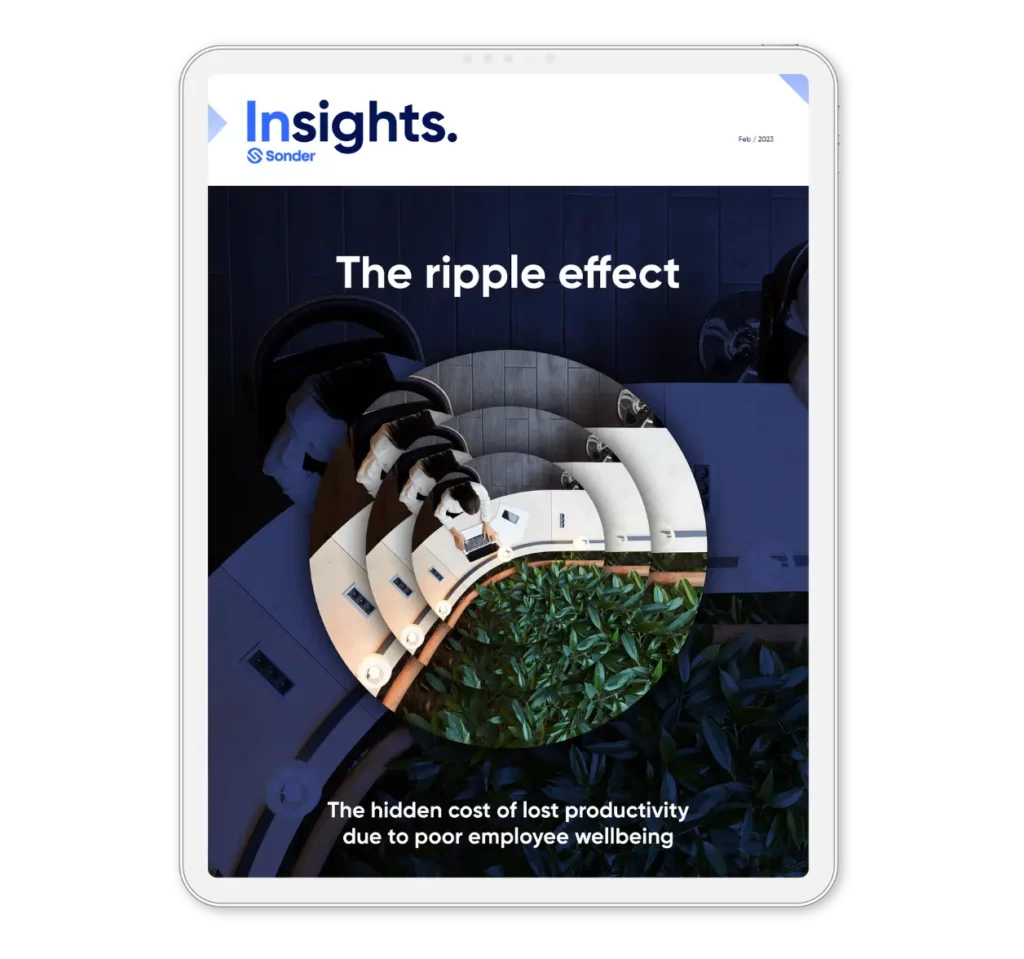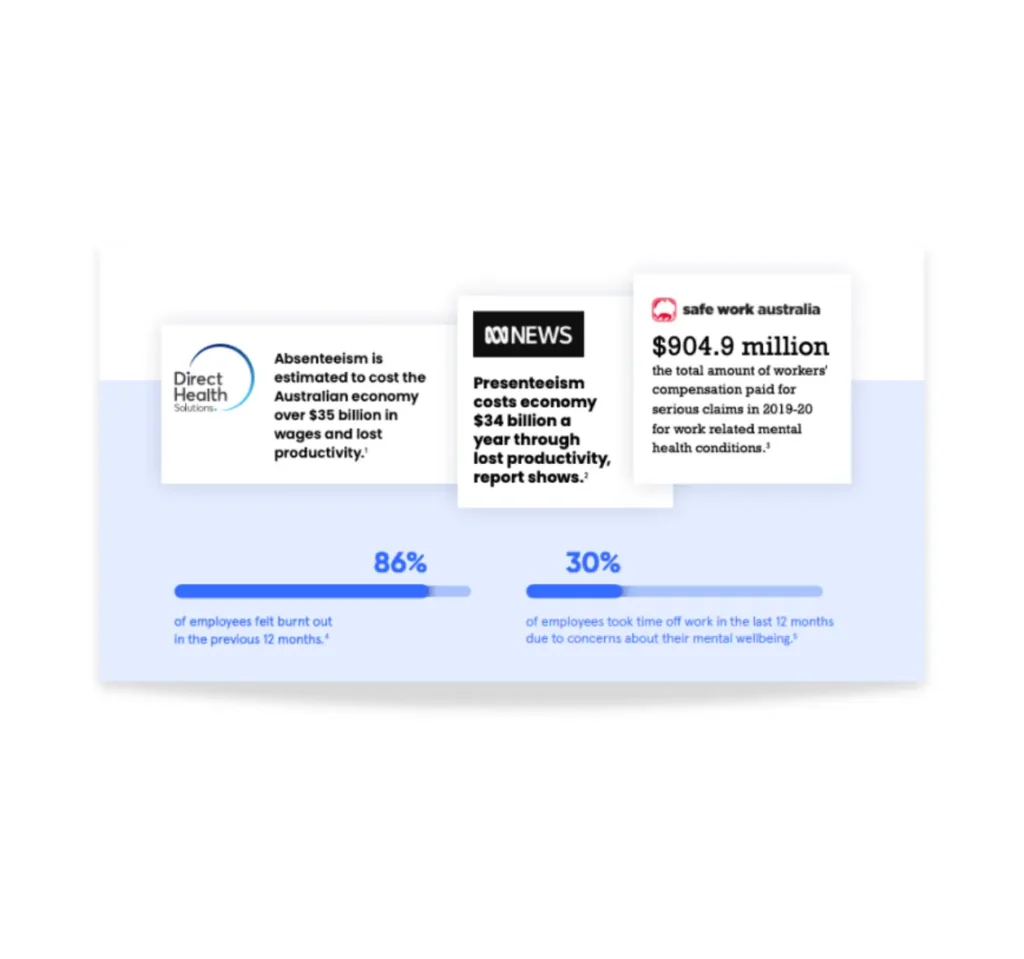

What’s inside?
When an employee is absent, not working at full capacity, or bringing negative energy to work due to poor wellbeing, it can cause a ripple effect across workplaces.
This evidence-backed report will help you:
- Understand the ripple effect of poor employee wellbeing
- See the ripple effect in action
- Calculate the hidden cost of lost productivity
- Minimise the impact on your organisation
- 0%of employees juggle extra work duties in the previous 12 months when a colleague was absent.
- 0%of employees feel pressured to turn up to work when they are unwell.

What’s the impact of poor employee wellbeing?
Poor employee wellbeing can cause organisations to:
Incur additional costs
- Payments to substitute workers
- Increased workers’ compensation premiums
- Higher outlays for employee support programs
- Replacement of employees
Lose revenue
- Reduced output
- Missed deadlines
- Lost business opportunities
Increase risk exposure
- Team morale
- Company goodwill
- Physical and psychological safety
24/7 medical support
Comprehensive medical support anytime, anywhere.
Provide your team with access to registered nurses, telehealth GPs, and tailored medical advice – all through a single entry point.